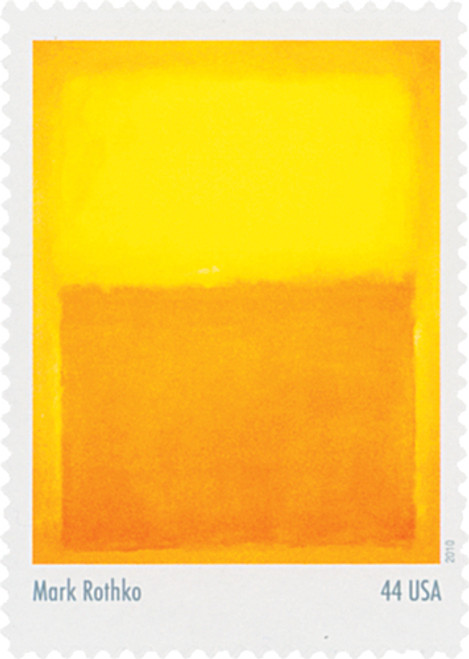
2010 44c Abstract Expressionist: Jackson Pollock
# 4444d - 2010 44c Abstract Expressionist: Jackson Pollock
$3.00 - $3.75
U.S. #4444d
Abstract Expressionists
Abstract Expressionists
Issue Date: March 11, 2010
City: Buffalo, NY
Printing Method: Lithographed
Perforations: Serpentine Die Cut
City: Buffalo, NY
Printing Method: Lithographed
Perforations: Serpentine Die Cut
Jackson Pollock – Convergence
Describing his unorthodox style of drip painting, Jackson Pollock (1912-56) remarked, “When I’m painting, I’m not aware of what I’m doing. It’s only after a ‘get-acquainted’ period that I see what I’ve been about. I’ve no fears about making changes, for the painting has a life of its own.” Despite their chaotic and random appearance, Pollock’s works were carefully executed.
Raised in Arizona and California, Pollock was largely influenced by Native American culture. After moving to New York City in 1930, Pollock studied under Thomas Hart Benton, whose rhythmic painting style greatly impacted him. Over the next 15 years, Pollock’s observations of Indian sand painting, Mexican muralists, and surrealists influenced his artistic style.
Nicknamed “Jack the Dripper,” Pollock preferred to lay large canvases on the floor so he could walk around his work, viewing and painting from all directions. His technique included dripping house paint on the canvas and moving it around with hardened brushes and sticks. Employing this technique on his 1952 painting, Convergence, Pollock used color, line, shape, texture, brushstroke, and light to express emotion.
Jackson was one of the most well-known Abstract Expressionists and his legacy lies with his one-of-a-kind drip paintings and purely abstracted artistic style.
U.S. #4444d
Abstract Expressionists
Abstract Expressionists
Issue Date: March 11, 2010
City: Buffalo, NY
Printing Method: Lithographed
Perforations: Serpentine Die Cut
City: Buffalo, NY
Printing Method: Lithographed
Perforations: Serpentine Die Cut
Jackson Pollock – Convergence
Describing his unorthodox style of drip painting, Jackson Pollock (1912-56) remarked, “When I’m painting, I’m not aware of what I’m doing. It’s only after a ‘get-acquainted’ period that I see what I’ve been about. I’ve no fears about making changes, for the painting has a life of its own.” Despite their chaotic and random appearance, Pollock’s works were carefully executed.
Raised in Arizona and California, Pollock was largely influenced by Native American culture. After moving to New York City in 1930, Pollock studied under Thomas Hart Benton, whose rhythmic painting style greatly impacted him. Over the next 15 years, Pollock’s observations of Indian sand painting, Mexican muralists, and surrealists influenced his artistic style.
Nicknamed “Jack the Dripper,” Pollock preferred to lay large canvases on the floor so he could walk around his work, viewing and painting from all directions. His technique included dripping house paint on the canvas and moving it around with hardened brushes and sticks. Employing this technique on his 1952 painting, Convergence, Pollock used color, line, shape, texture, brushstroke, and light to express emotion.
Jackson was one of the most well-known Abstract Expressionists and his legacy lies with his one-of-a-kind drip paintings and purely abstracted artistic style.








